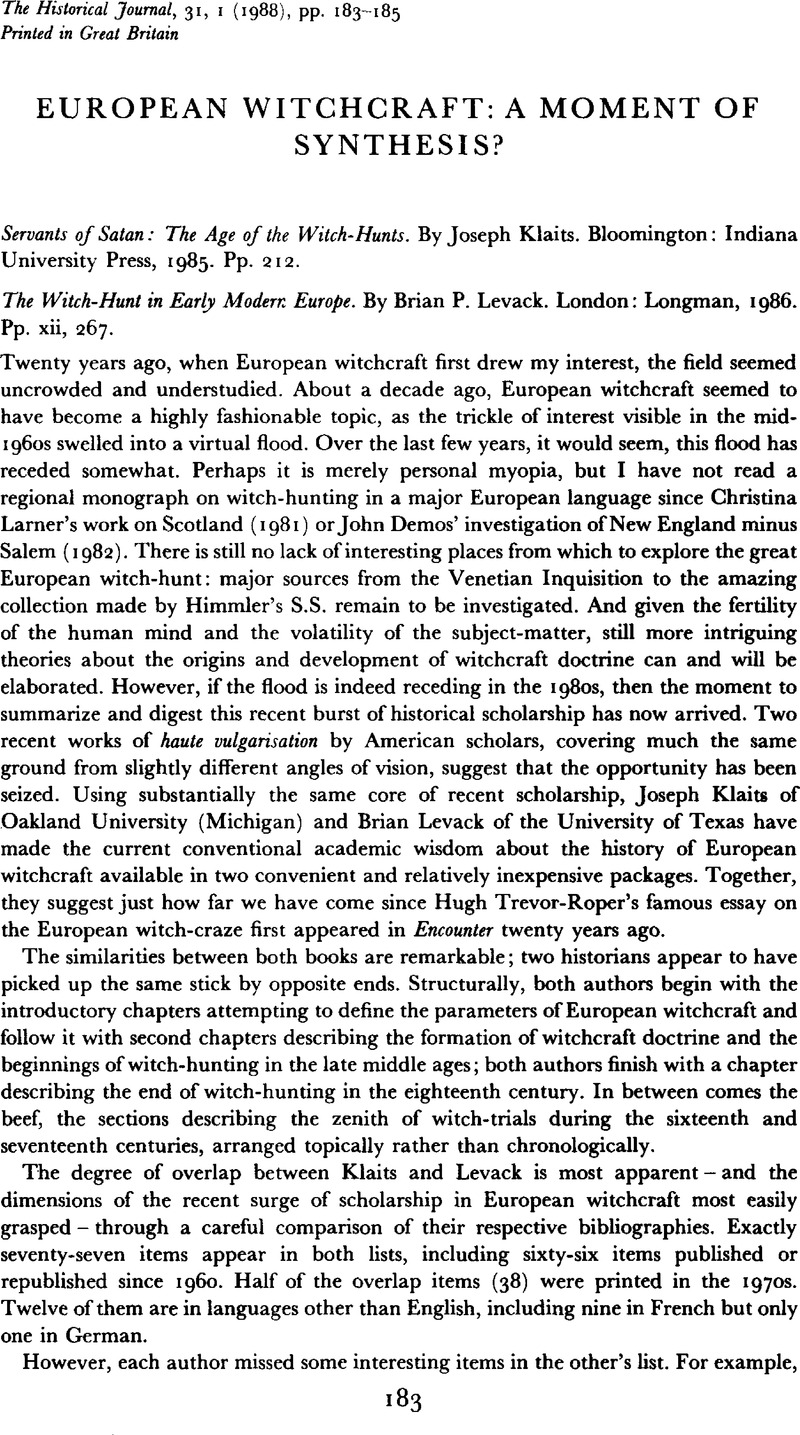Published online by Cambridge University Press: 11 February 2009

1 Carlo Ginzburg's 1967 study of the Benandanti of Friuli, now available in all major European languages, has been followed by Gustav Henningsen's recent investigation of the Sicilian doñas de fuera, while other work continues to appear, e.g. Francisco Bethencourt's study of sixteenth-century trials for illicit magic by the Portugese Inquisition: O Imaginário da magia (Lisbon, 1987)Google Scholar
2 The most exciting recent work has come from Hungary: Klaniczay, Gabor, ‘“Bernandantikresnik-zduhac-taltós”’, Ethnographia, XCIV (1983)Google Scholar. Poland, a far more important centre of witch-hunting and a nation with a major galaxy of historical talent, has yet to replace the nonetoo-satisfactory study of Baranowski (1952).
3 For example, Robert Muchembled has just produced Sorcières, justice et sociétéaux XVIe et XVIIe siècles (Paris, 1987)Google Scholar, while Carlo Ginzburg announces a new work on the origins of the doctrine of the Sabbat.